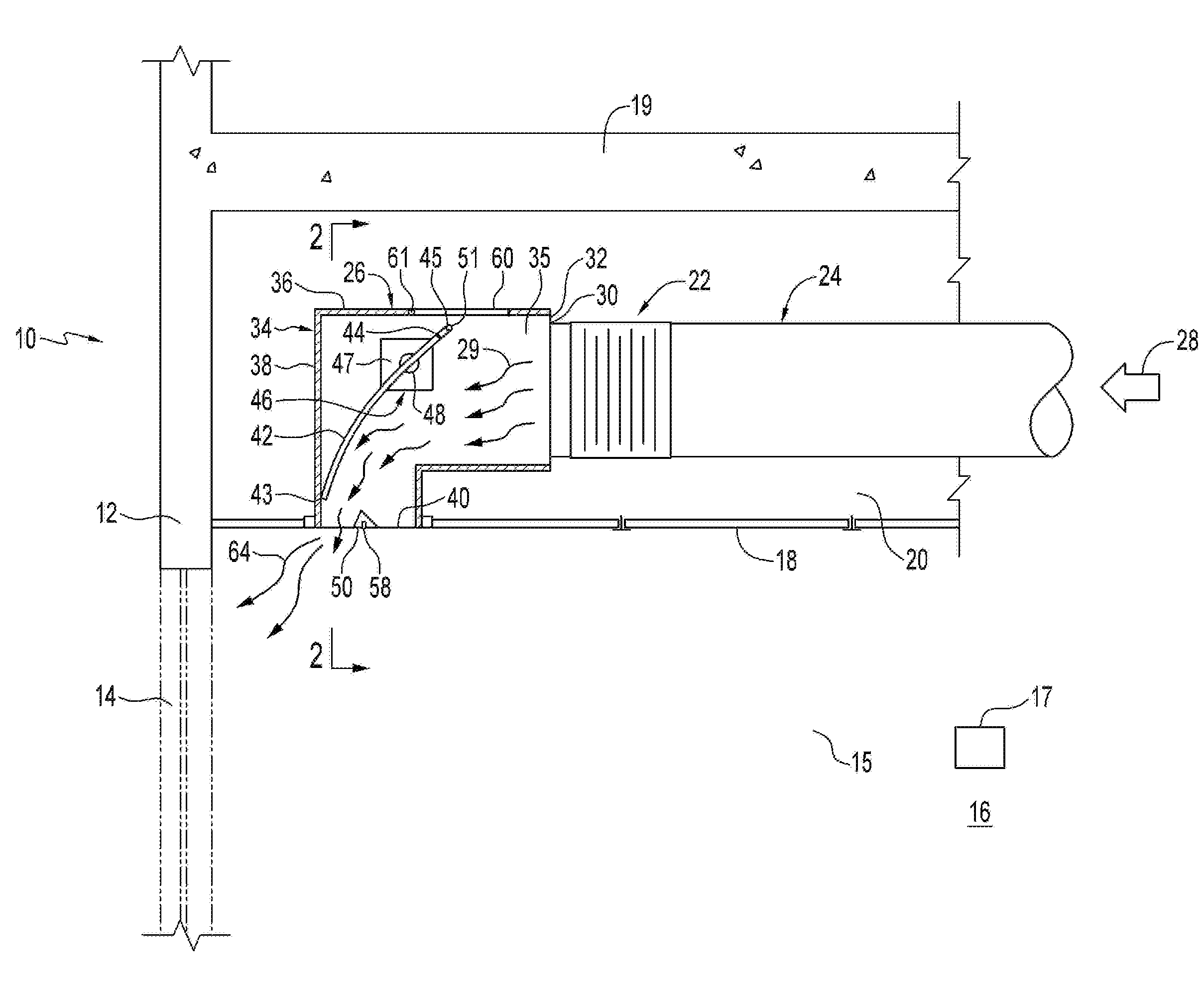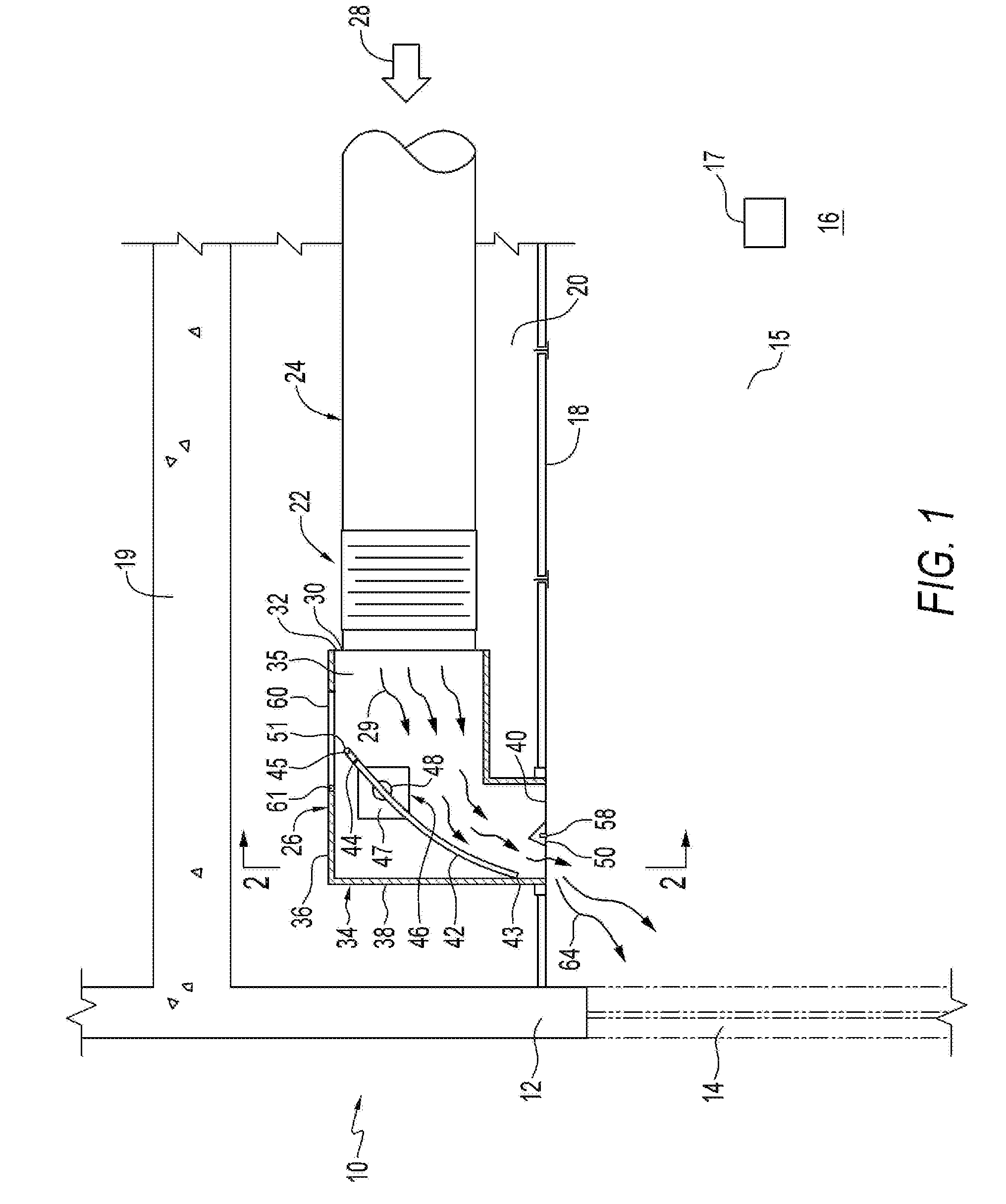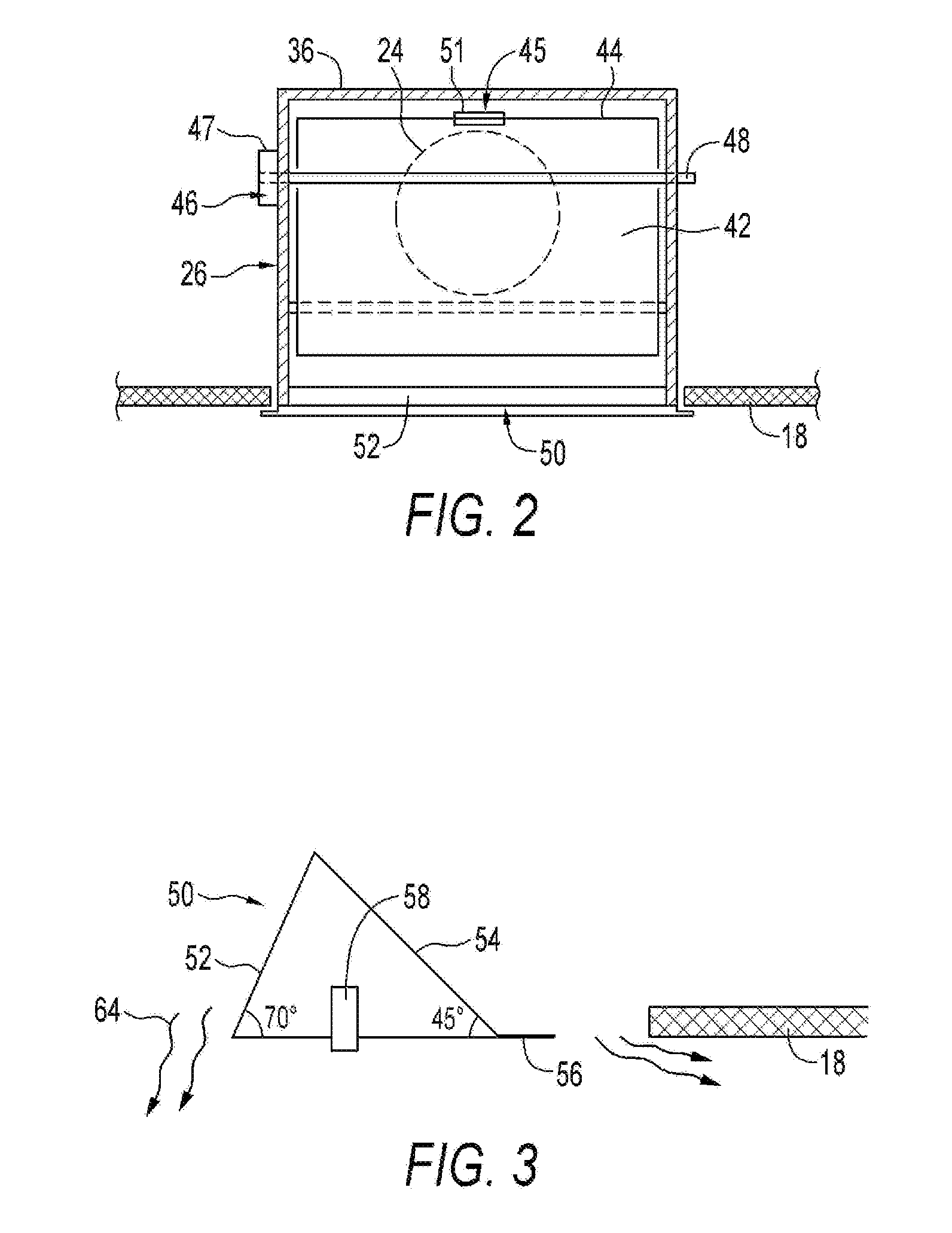Air distributing apparatus for reducing energy consumption
a technology of air distribution apparatus and energy consumption, which is applied in the direction of lighting and heating apparatus, ventilation systems, heating types, etc., can solve the problems of waste of energy, many parts of the apparatus, and less efficient system, so as to achieve the effect of reducing energy consumption
- Summary
- Abstract
- Description
- Claims
- Application Information
AI Technical Summary
Benefits of technology
Problems solved by technology
Method used
Image
Examples
Embodiment Construction
[0026]Referring to FIG. 1, there is illustrated a building structure 10. The building structure 10 has an exterior wall 12, a window 14 and a back wall 16 on which may be attached a temperate sensor 17 having a target temperature setting. The building structure 10 defines a space 15, which may be enclosed. The building structure 10 includes a ceiling 18 and a plenum 20 positioned perpendicular to the window 13. The plenum 20 extends between ceiling 18 and floor 19 above.
[0027]An air distributing assembly 22 is located within the plenum 20. The air distributing assembly 22 includes a supply duct 24 and an air distributing apparatus 26. The supply duct 24 is in communication with a primary air supply as indicated by arrow 28. The primary air supply 28 contributes to a stream of air 29 which in this example comprises heated air and which passes through the air distributing apparatus 26. The supply duct 24 has a terminal 30.
[0028]The air distributing apparatus 26 includes a diffuser 34 ...
PUM
 Login to View More
Login to View More Abstract
Description
Claims
Application Information
 Login to View More
Login to View More - R&D
- Intellectual Property
- Life Sciences
- Materials
- Tech Scout
- Unparalleled Data Quality
- Higher Quality Content
- 60% Fewer Hallucinations
Browse by: Latest US Patents, China's latest patents, Technical Efficacy Thesaurus, Application Domain, Technology Topic, Popular Technical Reports.
© 2025 PatSnap. All rights reserved.Legal|Privacy policy|Modern Slavery Act Transparency Statement|Sitemap|About US| Contact US: help@patsnap.com



